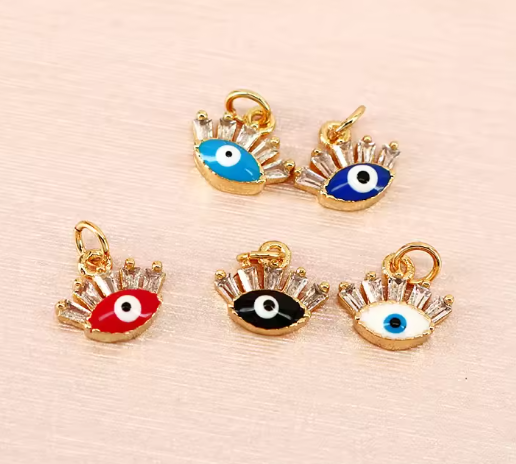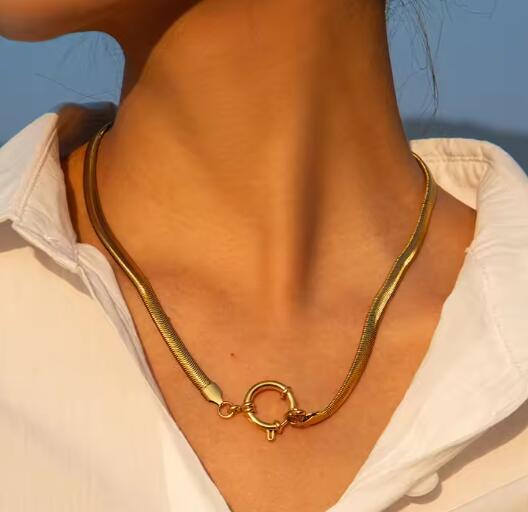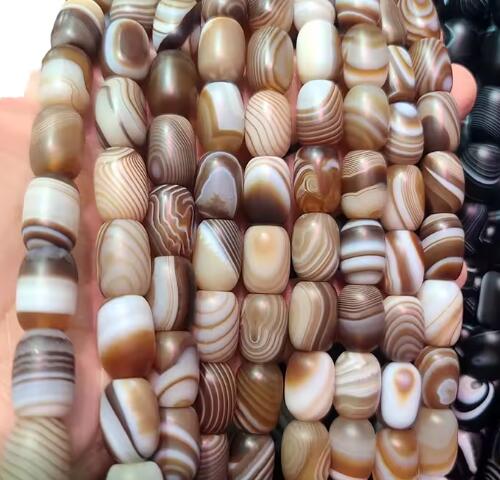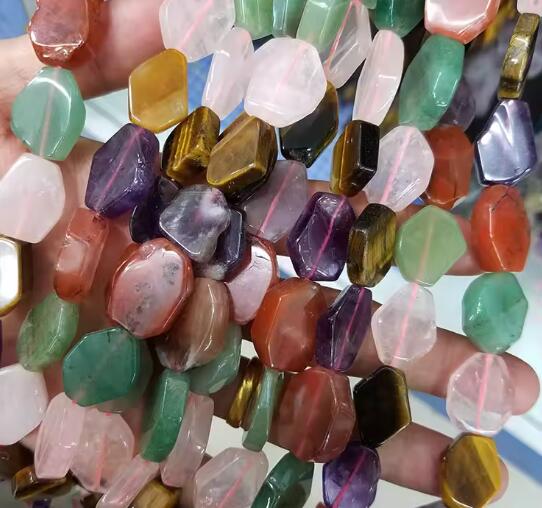Are 925 Silver Jewelry Pieces Plated with Palladium More Resistant to Corrosion Than Those Plated with Silver?
925 silver (sterling silver)—a blend of 92.5% pure silver and 7.5% other metals (usually copper)—is cherished for its warm luster and versatility. Yet its biggest downside is its vulnerability to tarnishing and corrosion: when exposed to air, moisture, or sulfur-rich substances (like sweat or lotion), it forms a dull, dark layer of silver sulfide. Protective plating solves this issue—but not all platings offer equal defense. A common question among jewelry shoppers is: Do 925 silver pieces plated with palladium resist corrosion better than those plated with silver? The answer is unambiguous: Yes, palladium-plated 925 silver delivers far superior corrosion resistance compared to silver-plated 925 silver—and this advantage stems from the distinct chemical properties and durability of palladium versus silver. Let’s break down the science behind this difference, how both platings perform in daily use, and why palladium plating is a smarter choice for long-lasting 925 silver jewelry.
1. The Science: Why Palladium Outperforms Silver in Corrosion Resistance
Corrosion in 925 silver occurs when the metal reacts with environmental triggers (sulfur, oxygen, moisture) to break down over time. Plating acts as a protective barrier—but the barrier’s effectiveness depends on the metal used:
-
Silver Plating on 925 Silver: Plating 925 silver with additional silver (often referred to as “silver re-plating”) adds a thicker layer of the same base metal. While this temporarily hides existing tarnish and boosts shine, it fails to address the root cause of corrosion: silver itself is chemically reactive. The silver plating will still react with sulfur and moisture, tarnishing at a similar rate to the underlying 925 silver. For example, a silver-plated 925 silver necklace worn daily might develop visible tarnish spots within 4–8 weeks—especially if the wearer sweats regularly or lives in a humid climate (like Florida or Southeast Asia). Over time, the thin silver plating can also wear off, exposing the base 925 silver and accelerating corrosion.
-
Palladium Plating on 925 Silver: Palladium is a rare noble metal (alongside gold and platinum) with exceptional chemical stability. Unlike silver, it does not react with sulfur, oxygen, or moisture—meaning it never forms tarnish or corrodes. When applied as a thin (typically 0.5–2 microns) plating over 925 silver, palladium creates an impenetrable shield that blocks the base metal from coming into contact with corrosive elements. A palladium-plated 925 silver ring, for instance, can maintain its bright finish for 6–12 months (or longer) with daily wear, even in high-humidity environments or with regular exposure to sweat.
2. Real-World Performance: How Both Platings Hold Up in Daily Life
Everyday activities—from washing hands to applying lotion—expose jewelry to corrosion-causing factors. Here’s how silver-plated and palladium-plated 925 silver compare in common scenarios:
-
High-Moisture Settings: Bathrooms, pools, and gyms are tough on silver-plated 925 silver. Moisture accelerates tarnish; a silver-plated bracelet worn to the gym might look dull and discolored after just 1–2 weeks of sweat exposure. Saltwater (from beaches or pools) is even more damaging, causing the silver plating to pit or peel. Palladium-plated pieces, by contrast, remain unaffected by moisture: a palladium-plated 925 silver pendant worn while swimming (though not recommended for extended water exposure) will stay bright, with no signs of corrosion.
-
Chemical Exposure: Perfume, lotion, hand sanitizer, and hairspray contain harsh chemicals that break down silver plating. A silver-plated necklace sprayed with perfume might develop dark, patchy tarnish within days, as the chemicals dissolve the thin silver layer. Palladium, however, is chemically inert—it does not react with these products. A palladium-plated 925 silver earrings set can be worn alongside skincare products without fear of discoloration or plating damage, making it ideal for busy professionals or anyone who uses daily beauty products.
-
Wear and Tear: Both platings can thin over time, but palladium’s hardness gives it a clear edge. Silver plating is relatively soft (2.5–3 on the Mohs hardness scale), making it prone to scratches from daily activities (like typing or opening doors). A silver-plated 925 silver ring worn daily might show bare base metal (and start tarnishing) within 3–4 months. Palladium is significantly harder (4.8 on the Mohs scale), so its plating resists scratches and wear. A palladium-plated 925 silver bracelet can retain its protective layer for 6–12 months or more, extending corrosion resistance far longer than silver plating.
3. Additional Benefits of Palladium Plating (Beyond Corrosion Protection)
Palladium plating offers more than just better corrosion resistance—it solves common pain points of silver jewelry:
-
Hypoallergenic Safety: While 925 silver is generally safe for most skin types, the copper content (7.5%) can irritate sensitive skin—especially when the plating wears thin. Palladium is 100% hypoallergenic: it contains no nickel (the most common jewelry allergen) and does not trigger redness, itching, or rashes. This makes palladium-plated 925 silver ideal for people with eczema, sensitive skin, or metal allergies.
-
Low-Maintenance Shine: Silver-plated 925 silver requires frequent polishing (every 1–2 weeks) to remove tarnish and restore shine. Over time, polishing can wear down the thin silver plating, shortening the jewelry’s lifespan. Palladium has a bright, silvery-white luster that never fades—no polishing is needed. A quick wipe with a soft cloth to remove dust or oils is all it takes to keep palladium-plated pieces looking new, saving time and effort for busy wearers.
-
Long-Term Cost Efficiency: While palladium is a precious metal, the thin plating used on 925 silver keeps it affordable (typically adding just 5–15 to the jewelry’s cost). Silver-plated pieces, by contrast, need re-plating every 3–6 months (costing 10–30 per piece) to maintain their appearance and corrosion resistance. Over 1–2 years, palladium-plated 925 silver ends up being more cost-effective, as it requires no additional maintenance or re-plating.
4. Expert Tips for Maintaining Plated 925 Silver Jewelry
To maximize the lifespan of your plated 925 silver jewelry, follow these targeted care tips:
-
For Silver-Plated 925 Silver: Use a non-abrasive silver polishing cloth (avoid liquid polish, which strips plating) to remove tarnish every 1–2 weeks. After wearing, wipe the jewelry with a dry cloth to remove sweat or oils, then store it in an airtight plastic bag (with a silica gel packet to absorb moisture) to slow tarnish. Avoid wearing it in the shower, pool, or gym, and wait 5–10 minutes after applying lotion/perfume before putting it on.
-
For Palladium-Plated 925 Silver: Wipe the jewelry with a soft, dry microfiber cloth once a week to remove dust or residue. No polishing is necessary—abrasive cloths can scratch the palladium plating. Store it in a soft jewelry pouch or a lined jewelry box (avoid airtight bags, as palladium doesn’t need moisture protection) to prevent scratches from other jewelry (like rings with gemstones).
In summary, palladium-plated 925 silver is far more resistant to corrosion than silver-plated 925 silver—thanks to palladium’s chemical stability, hardness, and hypoallergenic properties. Silver plating offers a temporary shine boost but fails to solve 925 silver’s core vulnerability to tarnish, while palladium plating creates a long-lasting, low-maintenance barrier that keeps jewelry looking beautiful for months. Whether you’re shopping for a daily-wear bracelet, a special-occasion necklace, or a gift for someone with sensitive skin, palladium-plated 925 silver is the superior choice for durability, comfort, and value.









